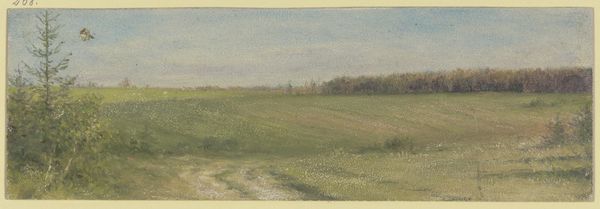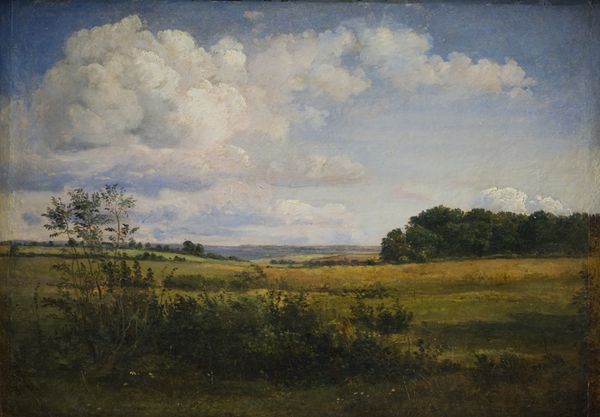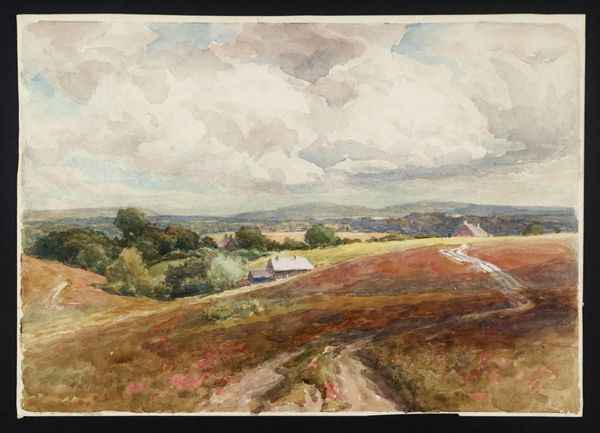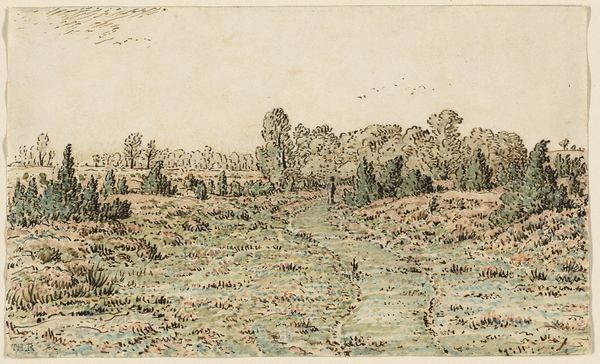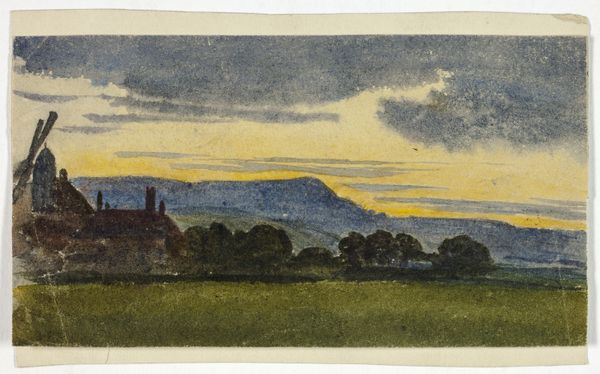
Copyright: Public Domain
Editor: So, here we have Peter Becker's "View of Unterliederbach" from 1861, a drawing made with colored pencils, tempera and watercolor. It strikes me as a pretty classic landscape, peaceful, even a little idyllic. What do you see in it? Curator: I see a record of a specific place and time, yes, but I also see a lens through which we can examine broader socio-political issues. Consider, for instance, who had the leisure to produce and consume images like these. What narratives are being prioritized, and whose voices are being excluded? How does this romanticized view of the countryside serve certain interests, perhaps masking realities of labor, class struggle, or environmental change? Editor: I never thought of it that way. I mean, it seems so straightforward, just a nice view. But you're right, there are people on that path. Were women allowed the same access as men to art? Curator: Exactly. And who is depicted in these rural scenes? How are they positioned in relation to the land? Think about the rise of industrialization during this period, and the ways in which landscape painting offered an idealized counterpoint to urban squalor and the exploitation of natural resources. Are we complicit in that romanticization when we only see the "beauty"? Editor: So, you're suggesting that by understanding the context in which this landscape was created, we can challenge the romantic notions? Curator: Precisely. This is an artistic opportunity. By unpacking the historical, social, and political dimensions of seemingly straightforward images, we can foster a more critical and nuanced understanding of art's role in shaping our perceptions of the world. Whose story does this landscape NOT tell? Editor: This gives me a lot to think about. I'll never look at a landscape the same way again. Curator: Excellent. That is what I had hoped. Let’s think critically, always.
Comments
No comments
Be the first to comment and join the conversation on the ultimate creative platform.


